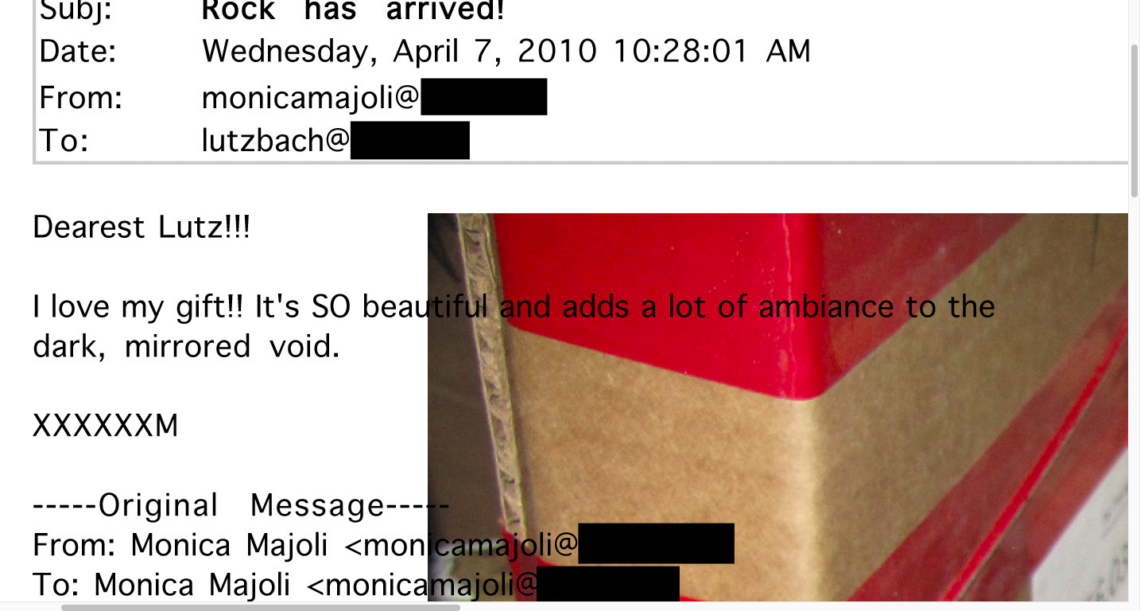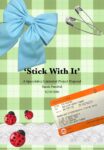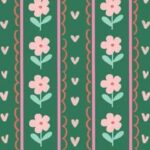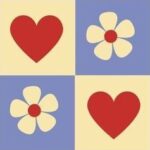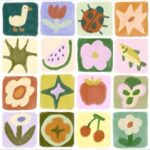I wanted to take this point in the project to revisit some suggestions presented to me from my presentation feedback as well as certain discussions that arose from my tutorial with Adam Lewis Jacob. I think I already have a good idea of where my project is heading but by doing this it will allow me to potentially expand the project or flesh out the contexts which I am interacting with. My project will therefore have more grounding when I am describing it going forward and making more practical decisions. By looking at further artists and other methods of working with the theme of Postal Art, as well as alternative formats for digitally documenting practice, I hope to gain a perspective on my own curatorial decisions.
Walead Beshty
Walead Beshty is a UK born artist now working in LA, USA whose practice engages with processes of freedom and constriction, questioning how we deal with active negotiation and restriction. Thinking about Jacques Derrida’s idea that the act of posting something, in his case the postcard, inherently changes what it is to the point that it is no longer what is sent, I wanted to look at Beshty’s series of postal art in particular, as suggested by Adam. In this work Beshty posts a series of boxes of varying fragile materials allowing them to get seemingly broken by the neglectful postal service but in actual fact this is where the work is created. As in the exhibition Standard Deviations (2020), glass cubes shatter with corners cut and copper packages are scratched and dented, making us think about how even if we create something with care it might not be received in the intended condition or way. Although I don’t think now that I will use the actual postal service anymore and instead will encourage sharing at the series of workshops I wish to create, I think this connotation of post is still interesting to consider. Could this same act of corruption exist on my proposed digital platform too?
https://www.actionstakenunderthefictitiousnamewaleadbeshtystudiosinc.com/standard-deviations-kunst-museum-winterthur-2020/2fyyguqmuvk3il2m0asvt2dgyjs3aq
https://www.actionstakenunderthefictitiousnamewaleadbeshtystudiosinc.com/fedex-copper-works-2009

Cara Phillips
Cara Phillips is an American artist who uses photography and writing to examine culture through the female lens. I like the way that she looks at the everyday objects that we use to get ready for the day. Normal things like nail scissors and eyelash curlers that are such a part of the regular life that often get overlooked. This is very similar to my proposition of recording the everyday through scraps, receipts, tickets and mainly paper goods. As I don’t want a physical exhibition and instead am going to encourage people to make their own work, I think Phillips is a great artist to contextualise my proposal document with.
https://cara-phillips.com/Studio

Katie Schwab
Katie Schwab is another artist brought up in my presentation feedback that I feel will help me contextualise my project when I am describing it in my proposal. Interested in the ‘politics of constructing…her work is multi-disciplinary and combines various forms of craft and fine art including video, text, tapestry, embroidery, ceramics and functional furniture embracing both contemporary technological making processes, and traditional craft techniques’. This encapsulates all aspects of my project, with the additional bonus of her being Scottish-based, supporting what I am encouraging the attendees of my workshops to create. I want to allow people wanting to physically craft and make tactile objects to have a sharing space, and help people to find enjoyment in making. With her being local to Scotland it makes me think as to if it would be wise to invite some experienced crafters to my workshops to help inspire the other creatives. I don’t want to alienate anyone who is interested in being part of the network and so for accessibility reasons I am going to advertise them as no experience required, and so at least for the first couple of workshops inviting local artists might generate a productive mood for the event. As described in How to be a Craftivist the atmosphere is integral to the success of a workshop and so helping people to create will make the network get off to a quicker start.
https://www.glasgowsculpturestudios.org/katie-schwab-1
https://www.katieschwab.com/
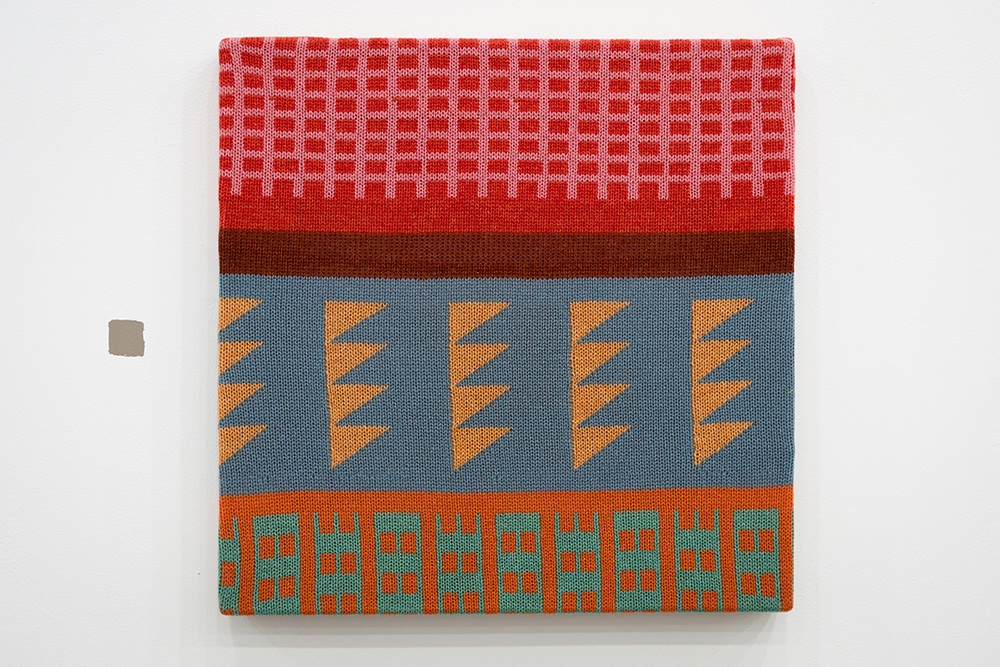 Katie Schwab, Working Position 6 (2022)
Katie Schwab, Working Position 6 (2022)
Emily Pope
Emily Pope’s practice is something that doesn’t directly correspond with my project but its’ themes of recording daily austerity and documenting through sound, film, printmaking and writing aligns with a lot of my theoretical thinking regarding memory. I especially like the way that her website is organised with very much a scrapbook feeling. Each work is ‘taped’ onto the page as an image, making the viewer scroll through a physical record of of her work. This reminds me of Jade Blood’s website (researched in a previous post) which also had a similar layout. This practical and physical feel to a digital document would work well as a format for my online archive/sharing space of the work created during my workshops. I think I would like to make something with this style for my project.
https://www.emilypope.co.uk/
https://studiovoltaire.org/current-studio-artists/emily-pope/
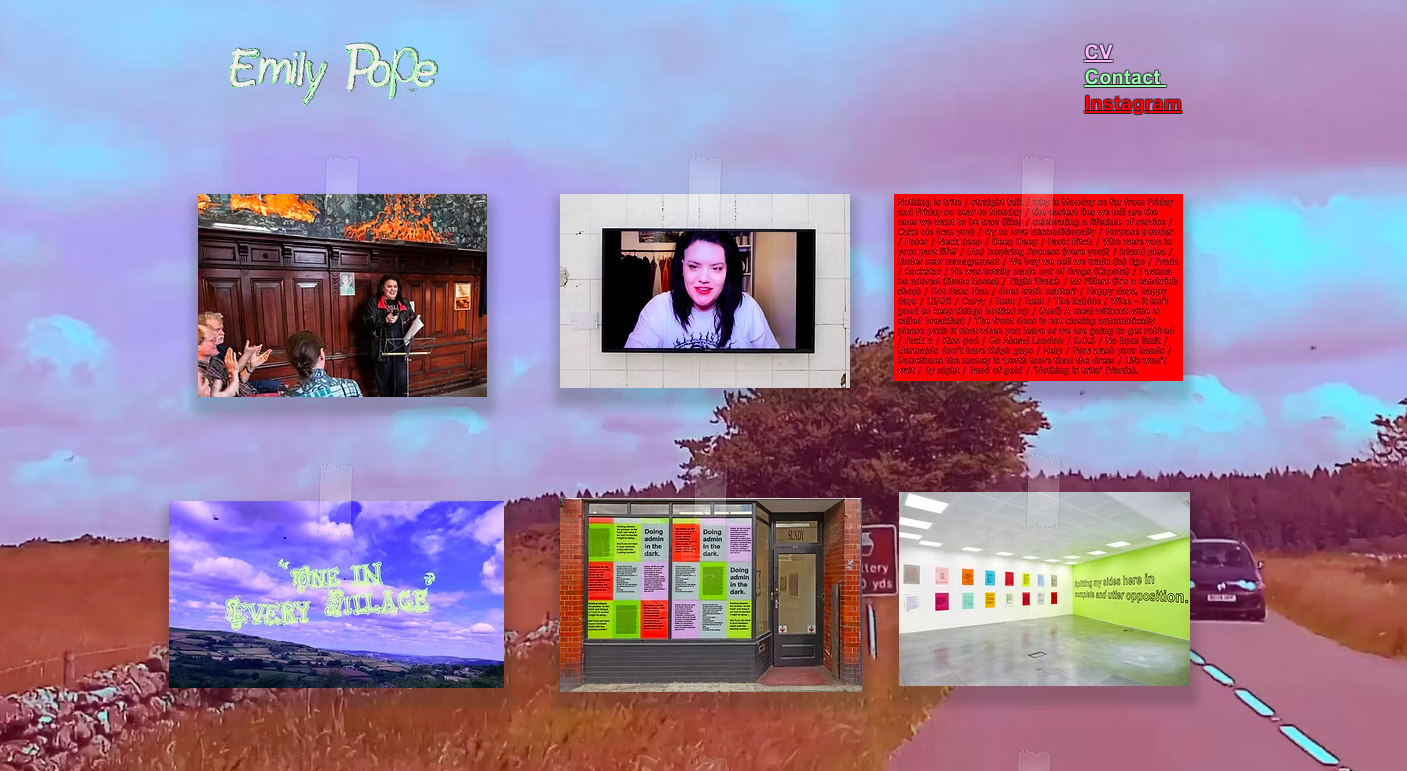
Lutz Bacher
Artist Lutz Bacher’s website functions in a similar way, almost acting as a digital portfolio or archive of their practice in which the viewer has to manually scroll and navigate through pages to see their work. With no central page, you never know quite what you will discover. I like this aspect of the website and how it very much reminds me of flicking through a pile of paper scraps or marking posts on Pinterest. Despite being digital there is something very tactile about its formatting which supports the way in which the artist worked. It would be wrong if the website had a ‘white cube’ feel to it when their practice was so chaotic and multi-disciplinary. If I am to make my digital component of my project reflect a network, a website that is inter-connected and has this material quality to it I am realising is very important. The website is an artwork in its own right.
https://www.lutzbacher.com/
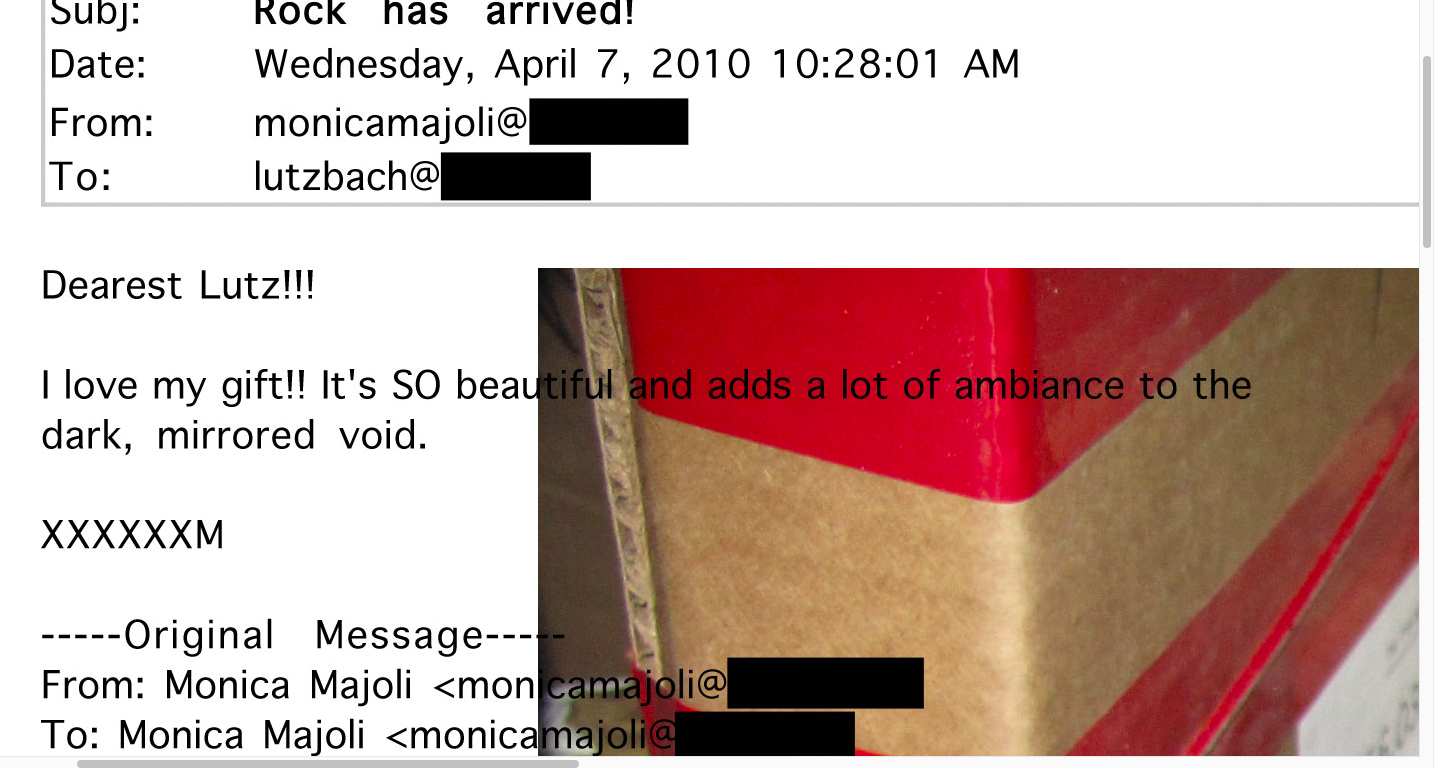
Good Press
Moving from the digital back to the physical, I know that I want some of the project to still be recorded physically. This will maintain the network by giving people a new resource to craft/create with, as well as improving accessibility for those who don’t have access to the internet or the ability to print an online resource out if they want a physical copy. Adam Jacob Lewis suggested to look at Good Press, an independent book shop, bookbinding studio, risograph press and events space in Glasgow which stocks small scale and grassroots publications. This would be an excellent location to have a physical copy of my network in, but I do think that I would want it to be free. The people who couldn’t access the internet most likely aren’t going to be able to purchase a published document, but I do think that hosting the publication there will align itself to an audience who are interested in making and physical crafting. The stronger the audience I can reach with my network the more successful I think it will be. As more work is created I can then host more workshops and subsequently reach a larger audience, allowing for the network to expand. Currently I think the format of publication I would like to create is a zine, thinking about the way artist Jade Blood (see previous posts) uses York Zine Fest as part of her practice, and the historical context that a zine traditionally has always been a very physical thing. This however is something I need to think about more in terms of practicality and especially funding.
https://goodpress.co.uk/
https://www.instagram.com/yorkzinefest/?hl=en-gb
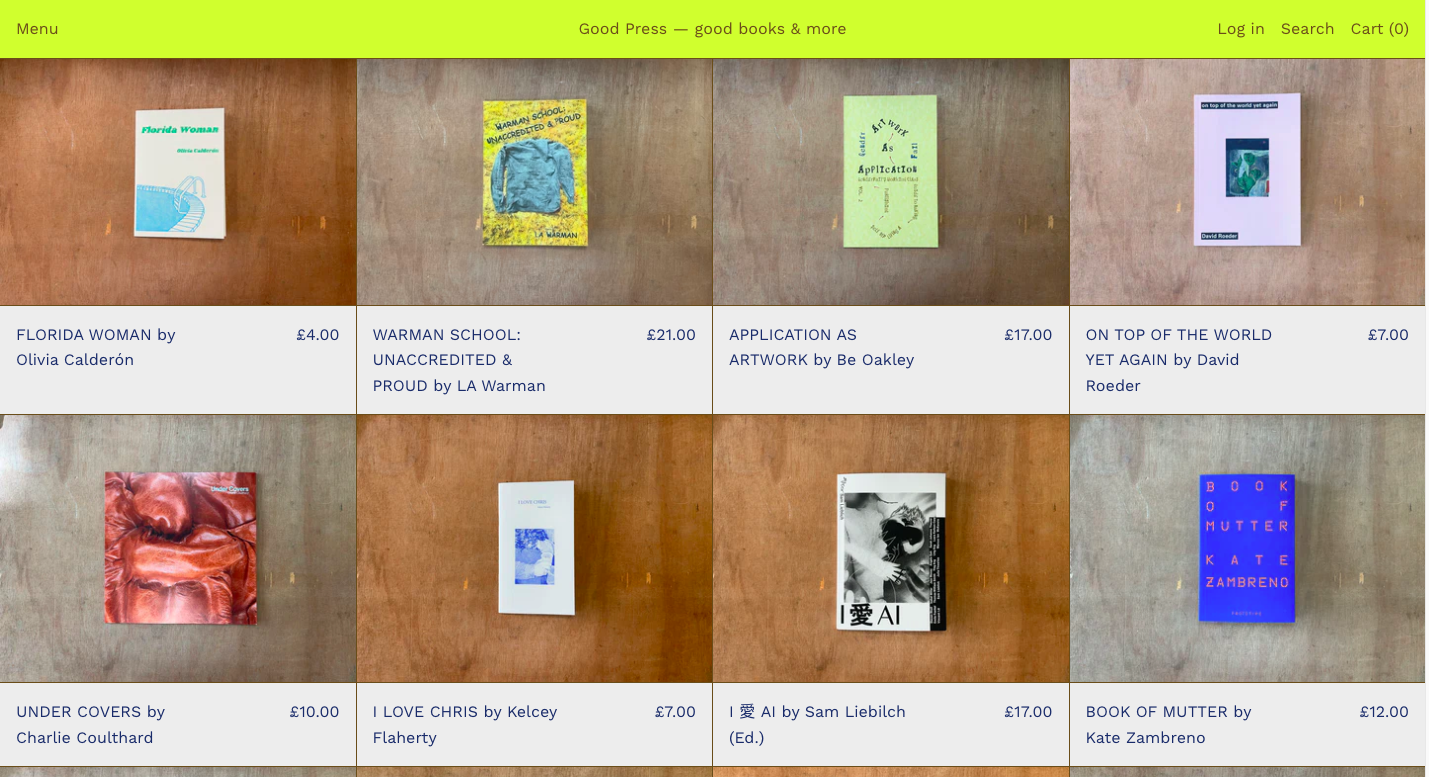
Hard Magazine
Adam Lewis Jacob also suggested in a tutorial that I look at Hard Magazine for its reclaiming and highlighting of our everyday exposure to ‘pornography, violence, heavy drug use, fear, trolling, conspiracy and paranoia’. Essentially, this magazine is the exact opposite of everything I wish to create which makes it a very interesting case study. It demonstrates everything that corrupts the everyday, with so much making our lives worse, more difficult, and all in all not things that necessarily benefit our lives. I very much would like my network to move away from this, instead focusing on the positives of daily life and the things we collect along the way to remember this such as receipts from coffee with friends or scraps of paper from flyers of an event you visited. I am not saying to remove the negatives entirely, after all that is unrealistic and so much of the history of feminist postal art came from people wanting to share their everyday experience. I would rather make the network feel like a safe sharing space for everyone involved.
https://www.destroyhardmag.com/

Design Choices for My Blog
From looking at the numerous ways artist’s websites and archives can function, as well as the varying practices that are engaging with similar themes and subjects to my project, it has been made clear to me that I want to improve the visuals of my blog. Something that I got as positive feedback in my presentation was how strong the theming of the slides were and how this massively helped to communicate what my project would look like with a heavy basis of mixed media and collage. I therefore have chosen to make this blog have more of a scrapbook feel on the posts which link directly to my project. Posts like this where the information is more research intensive will remain as classic posts which are easier to read large amounts of information on, but shorter posts which are thinking about the style, subject and realising my network will have a more handmade and collaged feel to match the themes of the project. I hope that this will aid the reader in seeing how the project will feel and how any digital or physical materials I make to support this will look, before I actualise and finalise them. On this as well, I have chosen to number each post so that there is a clear progression of my project which goes beyond the weekly updates, since so much of my project is external to what features in our weekly sessions.
